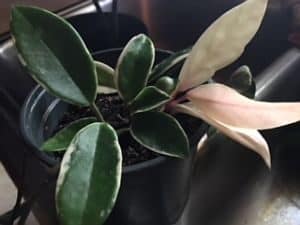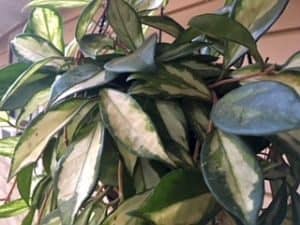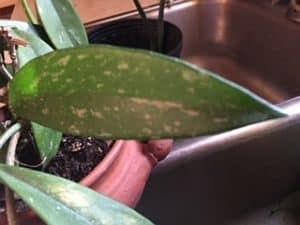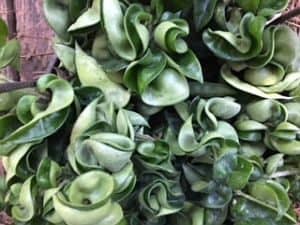
Hoya – Wax Plant
One of my favorite plants is the Hoya or Wax Plant. Grown in hanging baskets indoors or outdoors, it makes for a striking plant with generally smooth thick leaves of different shapes and colors depending on the species. Hoyas are evergreen, epiphytic vines and are reportedly grown without soil and on trees and other structures in the wild. They produce clusters of colorful, fragrant, waxy star shaped flowers.
Named after botanist Thomas Hoya, most are Asian plants that enjoy warm temperatures but does not enjoy direct sun in our area but indirect sun to part shade. Too much sun causes the leaves to yellow, wrinkle and look washed out. Not enough sun will prevent the Hoya from producing blooms. Don’t let the leaves start to wrinkle as this is a sign of needing water also.
Plant in potting mix that is well drained. This plant prefers to be on the dry side. Water thoroughly but skip watering occasionally. Apply fertilizer rich in phosphorous in spring and summer during active growing season but not too much or too often as this plant seems to thrive when neglected. I use any complete fertilizer available and have no problems.
Hoyas can take a long time to bloom as they are slow growing but they seem to bloom once they are pot bound so let them get tight in a pot and repot infrequently. Bring them inside to avoid frost and freezing temperatures as Hoyas will die as a result of freezing temperatures. Cold temperatures don’t seem to bother them.
Sometimes aphids can be an issue on the flowers as they’ll get inside the flower cluster. Scale and mealybugs could be pests. I knock them off with a strong spray of water from the hose or use insecticidal soap as needed.
Some Hoyas have twisted leaves or may be covered in hairs but all are interesting. The flower clusters are generally soft colors of pink and cream with deeper colored crowns. Some flowers are only fragrant at night. Do not move the plant while it is blooming. Do not remove the stem where it has bloomed as it will produce again at the same spur.
Hoyas can become quite long and may be wrapped upon itself for a thicker mass. Pruning is needed to control the vines. Propagate by soft wood (stem) cuttings or tip layering the stem in soil while attached to the mother plant. Leaf cuttings may be possible but I have heard that it can be difficult to get results.
Hoya carnosa is the most common and has given rise to many other varieties. Hoya carnosa tricolor has green, pink and cream colors on individual leaves, Hoya kerii has the heart shaped leaves.
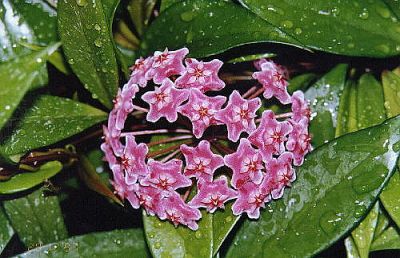
Submitted by Karen Blackburn

